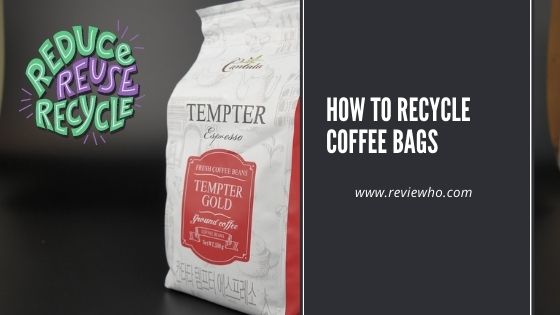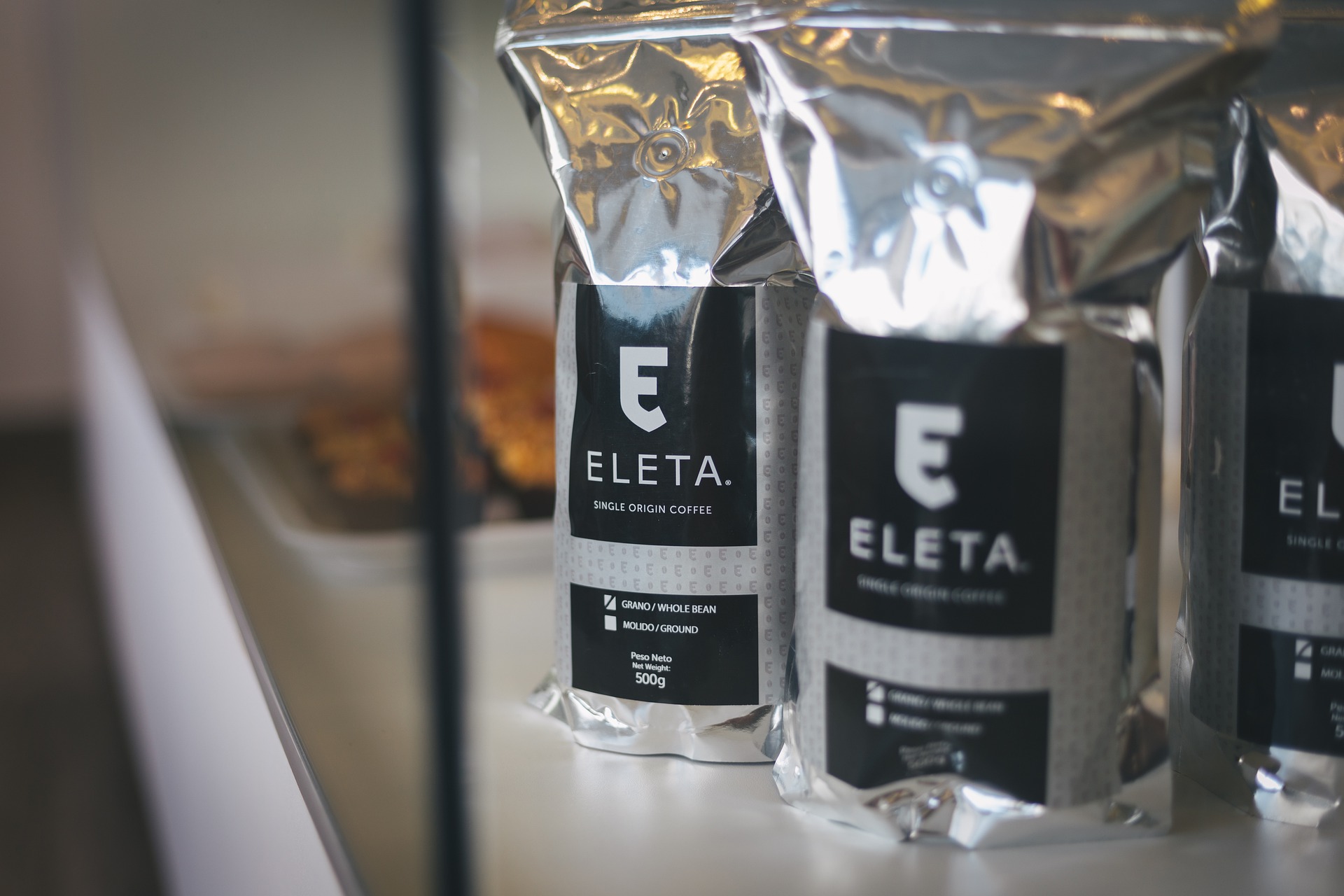No matter how much you’re trying to embrace a more environmentally friendly lifestyle, recycling will feel like walking on a minefield. There are plenty of do’s and don’ts that aren’t as obvious as they should be. This is especially true when it comes to coffee bags.
There is plenty of conflicting and inaccurate information online. On top of that, there is numerous different information on how you can recycle properly. This makes learning how to recycle a bit more challenging. Coffee bags are considered one of the hardest products you can recycle, especially if you don’t have access to special waste recycling initiatives.
We hope that this situation will change within a couple of years. There has been some progress in making coffee products and materials a lot more recyclable. The British Coffee Association (BCA) has announced some plans to implement zero-waste packaging for all coffee products by 2025. This is one of many plans that is part of the UK government’s goal for more efficient waste management in the country.
In the meantime, we’re going to show you some ways you can properly recycle coffee bags. We’re here to answer the most commonly asked questions about the topic and correct some myths on coffee bag recycling. Let’s get to it!
Recyclable Packaging: Why is it Important?
Waste management is one of the biggest problems that mankind is facing today and in the future. The World Bank estimates that annual waste generation will increase by up to 70% to 3.4 billion tonnes of waste every year by 2050. A huge percentage of this waste is from the manufacturing and packaging of consumer products.
The coffee industry and its supply chain contribute their fair share of waste worldwide. Millions of people enjoy coffee, and huge demands mean huge amounts of packaging. Plenty of consumers in the coffee industry discard their used coffee bags after one use only. This is why it is important to know how to recycle these coffee bags effectively.
A few studies have found that recyclable packages generate fewer carbon emissions while also reducing the amount of waste that ends up in our oceans and other bodies of water.
The Different Types of Coffee Bags
Now let’s look at the different types of coffee bags and how each of them must be approached when it comes to recycling. Most coffee bags will be made out of paper, plastic, or a mix of plastic and foil. The majority of coffee packaging materials are going to be a lot more flexible than rigid.
The type of packaging is very important for coffee manufacturers. This is because the type of packaging you use influences how the coffee retains its flavor and aroma over time. Coming up with a coffee bag that preserves the quality of the best coffee beans while also meeting eco-friendly requirements is going to be very hard for both mainstream sellers and independent coffee enthusiasts.
This is the main reason why a lot of coffee bags need to be constructed using a multilayer structure. Most coffee bags will combine two different materials (classic polythene plastic and aluminum foil are the most common choices) to ensure that bean quality is preserved and the bag is still durable enough for use. All of this while also making sure that the bag remains compact and flexible enough for long-term usage.
These multilayer plastic and foil coffee bags are impossible to separate in the way you would a milk carton and its plastic cap. Eco-friendly consumers are left with no choice but to let the coffee bags end up in landfills as they can’t properly recycle the bags themselves.
Foil-lined Coffee Bags: Are they Recyclable?
Unfortunately, foil-lined coffee bags can’t be recycled through your typical neighborhood recycling program. This also applies to coffee bags that are mainly made out of paper but are lined with only a little bit of aluminum foil on the inside.
Do note that both of these materials can be properly recycled but only when separated. The problem with coffee bags is that they are considered as “composite” packaging. This means that the materials used in manufacturing the coffee bag can’t be separated and thus can’t be recycled properly. Composite packaging is one of the most unsustainable types of packaging used in the food and drink industry.
You’d wish those coffee companies who consider themselves “ethical” would use recyclable bags for their coffee, but it isn’t always so. However, as technology evolves, more sustainable packaging may be widely available.
What Do I Do with My Empty Coffee Bags?
Finding ways to recycle your coffee bags may be challenging. But, there are still different methods you can reuse your empty coffee bags to help fight single-use plastics and help lessen our negative impact on the environment.
You can reuse empty coffee bags in a myriad of ways. You can use them as little portable lunch bags, wrapping paper for gifts, or even flexible containers for your numerous kitchen items lying about.
Use Coffee Bags For DIY Projects
Because coffee bags are made to be durable, they can be utilized as the perfect alternative for plant pots. To do this, pierce the bottom of your coffee bags to produce multiple small holes. Next, fill the coffee bags with enough soil for a small or medium-sized house plant and done. It’s that simple.
For those that are creative and talented in the art of DIY, coffee bags can also be used to create wonderful handbags, reusable shopping bags, and many more upcycled accessories.
There are other brands that have achieved a balance of quality and durability while still remaining eco-friendly; these brands use Omnidegradable packaging. Others are also using 100% plant-based eco-friendly packaging, with zero hidden plastics and glues. These types of coffee bags are very compostable, meaning that the materials used can break down and return to the soil naturally.
However, keep in mind that many coffee brands and independent roasters use multi-layered coffee bags because it is currently the best way to preserve the fresh coffee beans’ flavor and aroma. So if you’re looking to get into using more sustainable packaging and single-layered coffee bags, make sure that you do your research on how to effectively store these coffee bags so that you don’t ruin the quality of your coffee beans.
Where Can I Recycle My Coffee Bags?
Aside from upcycling your empty coffee bags or opting for sustainable packaging, there are still methods you can recycle coffee bags on your own, even composite coffee bags. First, there are waste management initiatives worldwide that can recycle foil-lined coffee bags properly. A good example of these initiatives is TerraCycle. However, this option may not be available for everybody.
Conclusion
So, are coffee bags recyclable? Yes, coffee bags are totally recyclable and there are plenty of things that you can do with them. It’s just that some types of coffee bags require more work to recycle.
As more and more people, companies, and government agencies push for more sustainable packaging in the coffee industry, we can do our small part by upcycling our empty coffee bags and slowly opting for more sustainable composite packaging. No matter how small, all of our actions will have an impact on the overall progress towards a more environmentally sustainable lifestyle.
Also, read:
Feel free to share your observations with me in the comments section!
Also, if you find the information in this post to be useful, be sure to share this post with your friends on Facebook, Twitter, and Pinterest!





